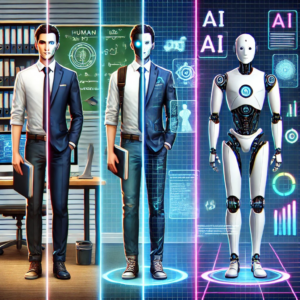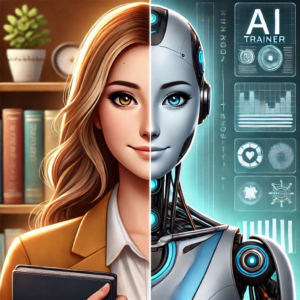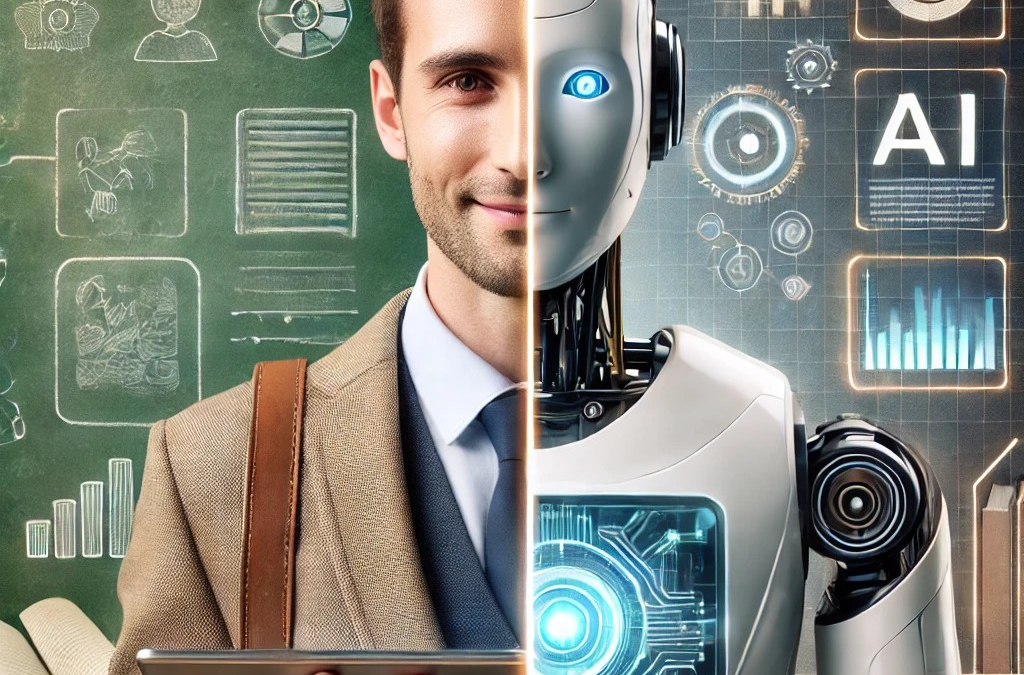How will AI Influence Learning & Development? Will It Replace The Role of The Trainer?
The question of whether artificial intelligence (AI) will replace human beings as customer service agents is already raging but how will AI impact the role of training and development? As companies look to assess budgets and costs the role of training and the ROI is always under scrutiny especially as AI and technology-driven solutions like agent assistance and AI Driven online training Avatars. But does this mean that AI could fully replace trainers and does using AI make learning and development opportunities even more accessible? Is it more likely that AI will work alongside trainers to enhance learning and long-term knowledge retention?
To understand the potential role of AI in L&D, it’s essential to examine where human trainers add irreplaceable value and where AI can assist by making training more agile, personalised, and sustainable.
 The Role of AI in Training: Complementing, Not Replacing
The Role of AI in Training: Complementing, Not Replacing
AI can transform traditional training by supporting microlearning, a method that delivers content in small, targeted bursts rather than long, intensive sessions. Through microlearning, learners engage in short lessons—often five to ten minutes long—that target a specific skill or concept. AI enables these microlearning modules to be highly adaptive, analysing individual progress, tailoring content, and delivering lessons precisely when needed. This personalised approach to learning allows AI to address knowledge gaps and reinforce content, making training both flexible and responsive.
The value of human trainers lies in their ability to facilitate complex skills like critical thinking, empathy, and leadership—qualities that AI, with all its capabilities, cannot replicate. Instead, AI’s role is to augment these capabilities, automating repetitive tasks, identifying areas for improvement, and providing trainers with data on learner progress.
Microlearning and AI: Bridging the Retention Divide
One of the biggest challenges in L&D is ensuring learners retain information long after a training session ends. Studies show that people forget up to 50% of new information within an hour of learning it, with that number rising as more time passes. This phenomenon, known as the “forgetting curve,” is a costly issue in training. Here, microlearning supported by AI offers a solution by delivering learning in digestible, spaced-out chunks and reinforcing key concepts over time.
AI-powered microlearning platforms can send reminders or additional content to learners at calculated intervals, helping them commit information to long-term memory. This process, called spaced repetition, has been shown to improve retention rates significantly. For trainers, AI-powered microlearning provides a way to keep content fresh in learners’ minds without requiring constant involvement, freeing them to focus on higher-value activities that require human insight and guidance.

Trainers’ Role in the Age of AI
The rise of AI-driven tools doesn’t signal the end of human trainers. Instead, it redefines their role. Trainers now have the opportunity to leverage AI to ensure that learning doesn’t end when the session does. Microlearning can extend the life of a training programme, reinforcing concepts with bite-sized learning interventions and creative content which allows trainers to focus on the critical elements that make learning engaging, such as personal mentorship, fostering soft skills, and building confidence in learners. AI also generates valuable data on learner performance, allowing trainers to identify patterns, understand where learners struggle, and personalise interventions, accordingly, combining analytics to showcase the actual ROI on training, something that’s been hard to measure historically.
With AI supporting with real time agent guidance linked to the learning objectives and onboarding tools and knowledge base, the speed to competency can improve and the learning can be embedded so leaders and trainers are freed to focus on the aspects of learning that require a human touch, like coaching, offering empathy, and adapting to individual learning styles in a way that algorithms cannot.
Will AI Replace Trainers?
It’s tempting to think of AI as a replacement for trainers, especially as the appetite for long classroom sessions reduces and more microlearning solutions become appealing. However, the human element in training is irreplaceable, particularly in areas requiring emotional intelligence, soft skills, and mentorship. Rather than viewing AI as a replacement, the future of training lies in a partnership model where L&D and AI-powered tools complement each other. L&D organisations and contact centres who embrace AI, microlearning and blended learning approaches as enhancements to their work, not replacements, will stand out as the industry pivots.
So, will AI replace trainers? Not in the foreseeable future. Instead, L&D and AI will co-exist, each playing to their strengths to create a more effective and engaging learning environment. The future of L&D isn’t an either/or scenario between AI and in person Facilitators; it’s about creating an effective blend of both. AI-powered solutions can serve as an on-demand resource that bridges the knowledge retention gap, while human trainers provide the relational, support that truly inspires and motivates learners.
.
